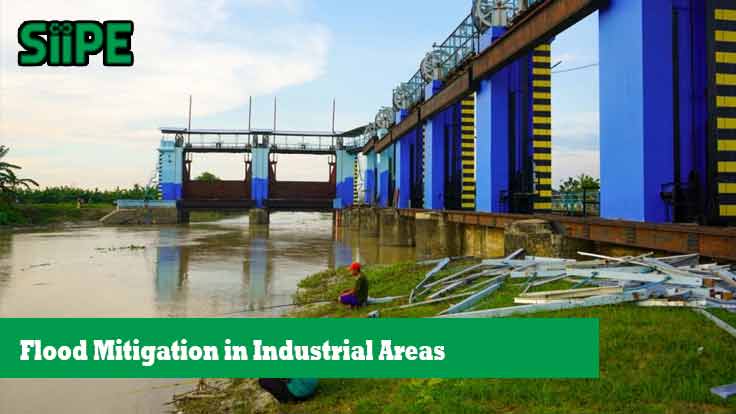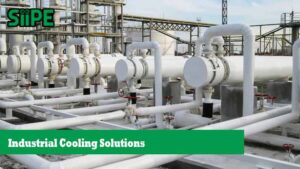Flood Mitigation in Industrial Areas: Safeguarding Operations and Investments
Flooding is one of the most damaging and disruptive natural disasters, especially for industrial areas. When industrial zones are hit by floods, the consequences range from equipment damage and halted operations to environmental hazards and major financial losses. This article explores the importance of flood mitigation in industrial areas, the strategies involved, and why proactive planning is crucial for business continuity and investment protection.
Why Flood Mitigation Matters in Industrial Zones
Industrial areas often host manufacturing plants, logistics centers, storage facilities, and utility infrastructure. These are not just buildings—they are economic drivers. A single day of downtime due to flooding can cost companies millions, while also affecting supply chains and employment.
Flood mitigation is not just a matter of protecting infrastructure—it’s about safeguarding jobs, investments, and the environment. Here’s why it matters:
-
High asset concentration: Industrial zones contain expensive machinery, sensitive electronics, and large volumes of raw materials.
-
Business continuity: Frequent flooding reduces investor confidence and may cause businesses to relocate.
-
Environmental safety: Floods can lead to the release of hazardous materials, contaminating soil and waterways.
-
Insurance costs: Facilities with poor flood planning often face higher premiums or may be uninsurable.
Common Flood Risks in Industrial Areas
Several factors increase the flood risk in industrial zones:
-
Proximity to rivers, coastlines, or low-lying areas
-
Inadequate drainage systems
-
High percentage of paved surfaces (which reduces natural water absorption)
-
Climate change, increasing extreme weather events
-
Poorly planned land use and deforestation in nearby areas
Strategies for Effective Flood Mitigation
Flood mitigation is a combination of infrastructure, planning, technology, and policy. The following strategies are most effective when implemented together:
1. Elevated Infrastructure Design
Design buildings and utility systems above flood levels. This includes:
-
Raising floors of production areas
-
Locating electrical systems on upper floors
-
Using waterproof construction materials
2. Advanced Drainage and Water Management
Install effective stormwater drainage systems including:
-
Permeable pavements
-
Retention ponds or artificial wetlands
-
Rain gardens and bioswales
-
Underground storage tanks to temporarily hold excess water
3. Flood Barriers and Levees
Construct physical barriers around the industrial site:
-
Flood walls or embankments
-
Mobile or retractable floodgates
-
Sandbag barriers for emergency deployment
4. Green Infrastructure Integration
Adopt eco-friendly solutions like:
-
Reforestation of surrounding areas
-
Green roofs and vertical gardens
-
Urban wetlands to absorb runoff
5. Early Warning Systems and Real-Time Monitoring
Use IoT sensors and weather data analytics to:
-
Detect rising water levels
-
Send alerts to facility managers
-
Automate shutdowns or activate backup systems
6. Zoning and Site Selection
Prevention starts with smart site selection. Before developing an industrial park:
-
Conduct hydrological studies
-
Assess floodplain maps
-
Avoid wetlands or historically flooded areas
7. Disaster Recovery and Emergency Planning
Prepare for the worst with:
-
Backup power and communication systems
-
Emergency response drills
-
Employee evacuation training
-
Insurance coverage for flood-related damages
Government and Regulatory Support
Flood mitigation requires public-private collaboration. Governments play a critical role by:
-
Developing zoning regulations that prohibit development in high-risk flood areas
-
Offering incentives (like tax relief or grants) for implementing flood-resilient infrastructure
-
Investing in public drainage systems and regional flood control projects
-
Creating flood risk maps and making them accessible to developers and investors
Case Studies: Flood Mitigation in Action
✅ 1. Singapore’s Industrial Parks
Singapore has integrated a “Smart Drainage” system in many of its industrial areas. Sensors monitor rainfall and water levels in real time, automatically adjusting drainage flows and reducing flooding risks significantly.
✅ 2. Rotterdam, The Netherlands
In one of the world’s most flood-prone countries, Dutch industrial zones use floating buildings, artificial islands, and underground water storage systems to stay operational even during high tides or river overflows.
✅ 3. Cikarang, Indonesia
In response to frequent flooding, several factories in Cikarang have adopted rainwater harvesting systems and elevated floor designs, supported by industrial estate managers and local government cooperation.
Benefits of Proactive Flood Mitigation
-
Reduced downtime and business interruption
-
Lower insurance premiums
-
Improved investor confidence
-
Enhanced safety for workers and equipment
-
Environmental protection through reduced contamination
-
Compliance with ESG standards and green certifications
Challenges to Implementation
While the benefits are clear, flood mitigation also presents challenges:
-
High initial costs for infrastructure improvements
-
Limited awareness among SMEs or newer developers
-
Regulatory inconsistencies in flood zoning and building codes
-
Maintenance of mitigation systems over time
-
Resistance to changing legacy systems
The Future: Climate-Resilient Industrial Design
With the threat of climate change growing, flood mitigation must evolve from a reactive measure to a core part of climate-resilient industrial design. Future trends include:
-
AI-powered flood simulations during planning
-
Smart infrastructure that adapts to weather patterns
-
Mandatory ESG reporting related to flood and climate risk
-
Public-private partnerships to fund large-scale mitigation projects
FAQs
Q: Should small factories invest in flood mitigation?
Yes. Even small-scale flooding can cause major losses. Affordable solutions like elevated storage or improved drainage are essential.
Q: What’s the ROI of flood mitigation?
Studies show that every $1 spent on disaster prevention saves $4–7 in post-disaster recovery costs.
Q: Is insurance enough to cover flood damage?
Insurance helps, but it’s not a substitute for physical protection. Many policies have exclusions or delays in payouts.
Q: Can green infrastructure really help in industrial zones?
Absolutely. Green solutions reduce surface runoff and complement engineered systems, especially in hybrid designs.
Flood mitigation in industrial areas is no longer optional—it’s a business necessity. Whether you manage a single facility or an entire estate, investing in proper planning and infrastructure can prevent massive losses and secure long-term operations. As climate risks continue to rise, the most resilient industrial zones will be the ones that plan ahead and innovate early.











